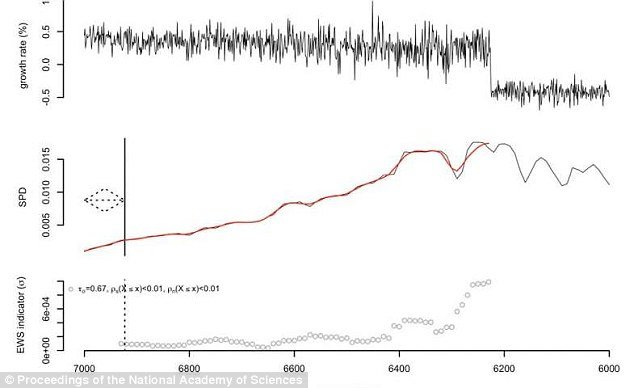
Now, researchers may have developed the framework to predict these events before they happen.
By analyzing archaeological records of the European Neolithic communities, which existed roughly 9,000 years ago, researchers have identified the early warning signals linked to societal downfall.
In a study published to Proceedings of the National Academy of Sciences, they explain that this new framework could help to prevent future catastrophes as the modern world copes with major societal shifts.
The researchers from the University of Maryland and University College London investigated whether early warning signals are present when an ecosystem begins to show declining resilience.
This phenomenon can indicate the forthcoming of 'major reorganization,' or a regime shift within the ecosystem, and subsequently, a collapse.
To do this, they examined 2,378 archaeological sites from nine regions of Neolithic Europe.
During this period, the communities experienced massive population growth as a result of the emergence of agriculture and the technological advancements that followed.
While these developments may seem beneficial, they also led to 'periods of devastating societal instability that we are only now beginning to understand,' the authors wrote.

They analyzed the records for two types of signals: critical slowing down and flickering.
'CSD describes a general increase in the time it takes a system to recover from external shocks such as population loss due to disease, warfare, or crop failure,' they wrote.
'Flickering describes increasing directional bias in a system's response rate to such perturbations, such as a society stuck in a socio-ecological trap where strong reinforcing behaviour and a lack of innovation prevents adaptation.

'Here, flickering would suggest increasing recovery time from population decline events relative to growth events before major collapse.'
In their investigation, the team found that such warning signs did line up with the eventual collapse of a given community.
While this analysis was retrospective, the researchers say the framework could help to interpret these signals in the social and nature factors of modern communities as well, including growth and collapse, climate change, resource degradation, disease, and warfare.
This could help to predict whether future communities will face a similar fate.
'It remains unclear whether modern technological innovation can continue to outpace demand,' the authors wrote, 'and it is important for sustainability scientists to consider the possibility that generic mechanisms can contribute to demographic collapse in human societies, as well as to develop ways to detect declining resilience.'



Ukraine before the bombs: [Link]
The Pelgasi and then the Etruscans brought preserved info to the Med. Possibly fathered the Sumerians. Significant that they were from mountains?